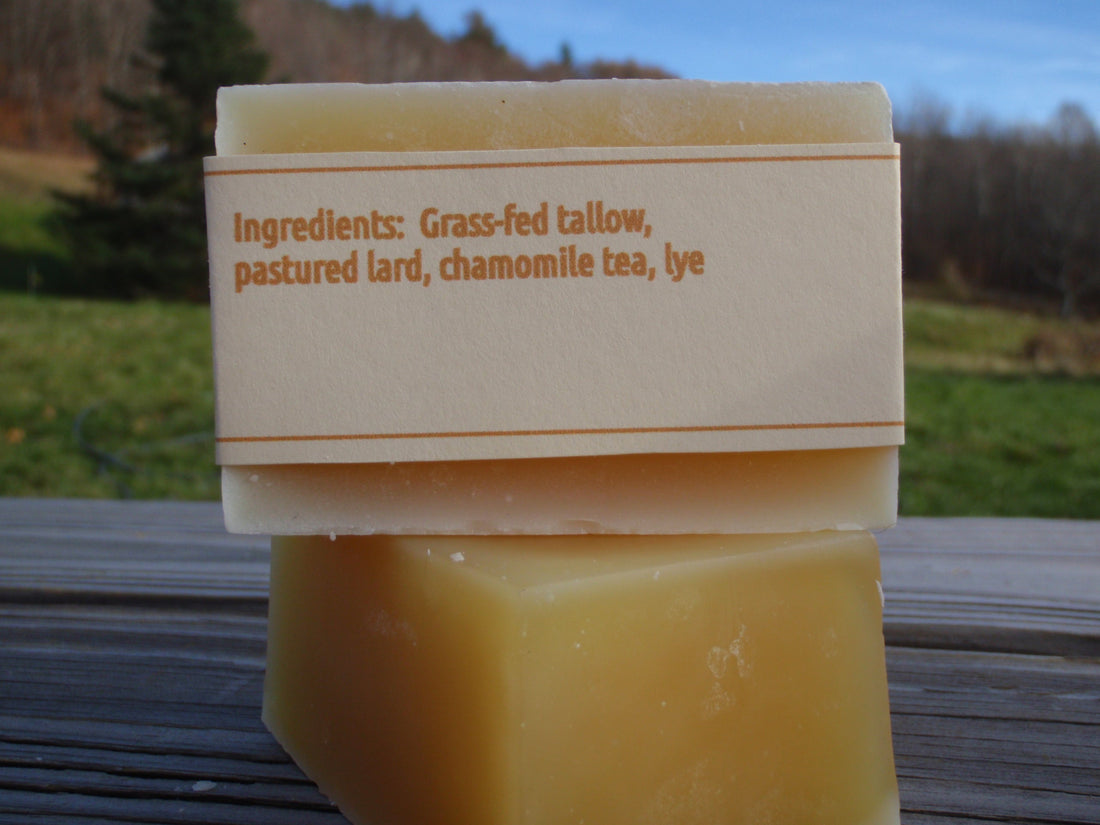
What is lye and why it's in our soaps
Share
Every so often I get asked some variation of "the lye question" from customers or prospective customers: Do your soaps contain lye? (yes... and also no) Can you make me a soap without lye? (Nope) Is lye soap bad for your skin? (it depends...)

Do your soaps contain lye?
First lets talk about the several different ways that lye can appear on an ingredient label. I simply use the term "lye", since it is simple and clear and most folks understand what it is. Another name for lye is "sodium hydroxide" (chemical formula NaOH) which is probably a bit more precise since lye can also refer to the potassium hydroxide used to make liquid soaps. However, there are many who wouldn't recognize what that is (just look up all the jokes surrounding "dihydrogen monoxide" if you need a laugh) and would just lump it into the category of "chemicals to avoid" without giving it any more thought.
Probably my least favorite term is "wood ash extract" as this just seems like an attempt to skirt around people's discomfort with chemicals in general by giving it a greener more natural sounding name. Wood ash extract is, after all, just lye by a different name.
So all that is why yes, my soaps do contain lye but how can the answer also be no? That's when we get into chemistry. Like baking a cake, making soap involves chemical reactions. You can't "unmake" a bar of soap, anymore than you can "unbake" a cake. Once the chemical reactions have occurred, there's no going back to the original ingredients.
Here though, the analogy does fall apart a bit. If cake batter has eggs in it, the baked cake still contains eggs, just in different form. Soap batter, on the other hand, has lye in it but properly finished soap contains no lye.
How does that happen? Well, soap batter at it's most basic is a mix of sodium hydroxide (lye), fats and oils, and water. Once these ingredients are mixed together, they undergo chemical changes, that is the bonds between the molecules are broken and recombined. In a soap intended for use on skin, all of the sodium hydroxide molecules are broken up and reconnected to the fat molecules (with the help of the water). Another way to look at it is that sodium hydroxide, a base, is neutralized by the fatty acids in soap making oils.
Let's take my Simple Tallow Soap as an example. To make this soap, I combine just three ingredients: tallow, sodium hydroxide and water. Those ingredients undergo a chemical reaction when mixed together in the soap making pot, which results in a single compound: sodium tallowate, which a chemist would classify as a salt of a fatty acid.
None of the sodium hydroxide we started with remains, since it has all been broken up and combined with the tallow and water molecules to form something completely new! If you look at the ingredients on soap from large commercial operations, you will see ingredients like sodium palmate, sodium cocoate, sodium lardate, sodium tallowate, etc., this is simply what it looks like when you list what comes out of the process rather than what goes in.
So, do our soaps contain lye? No, the finished product does not contain any lye but lye is used in the soap making process.

Can you make soap without lye?
This answer is much simpler, no! You cannot make soap without lye, though there are products the are called "soap" but aren't, that don't use lye.
Lye (either sodium hydroxide or potassium hydroxide) is required to create soap. The method I use is called cold process (CP) and is a way to make soap from scratch. There is also something called "melt and pour soap" which uses a base that has already gone through the saponification process at the manufacturer (the lye and fats have already reacted) and has some added ingredients to allow it to melt smoothly.
Many liquid bath and body products (and most laundry "soaps") are actually detergents and have a completely different chemical process than soap. It does still get you clean but the ingredient list is a lot longer and the manufacturing process more complicated.
Is lye soap bad for your skin?
Almost all of my soaps are formulated for use on skin and thus are completely safe. The one exception is Household Tallow Soap. This soap is NOT formulated to get living things clean but rather, dishes, surfaces and laundry stains. This means that the soap recipe is calculated to leave no extra fat for moisturizing (all my other soaps have a certain percentage of extra fat to prevent drying out your skin). If you were to use this soap on your skin it would be very drying and potentially irritating, so it's not recommended.
If you've stuck with this to the end, thank you! I really enjoy the nitty-gritty science behind this essential item of everyday life and I'm happy to have the opportunity to try and share my understanding.

12 comments
Thank you! Excellent explanation – now I get it. I gave lamb tallow to a neighbor who made “Lye soap” and now I understand. :)
I really appreciate the breakdown of this process. This was a great explanation and exactly the information I was looking for!
thank you for your explanation. I really learnt a lot from your write up. I wish I can ask you a few more questions .
Thank you for putting this process in easy to understand terms
Thanks. Very helpful information.